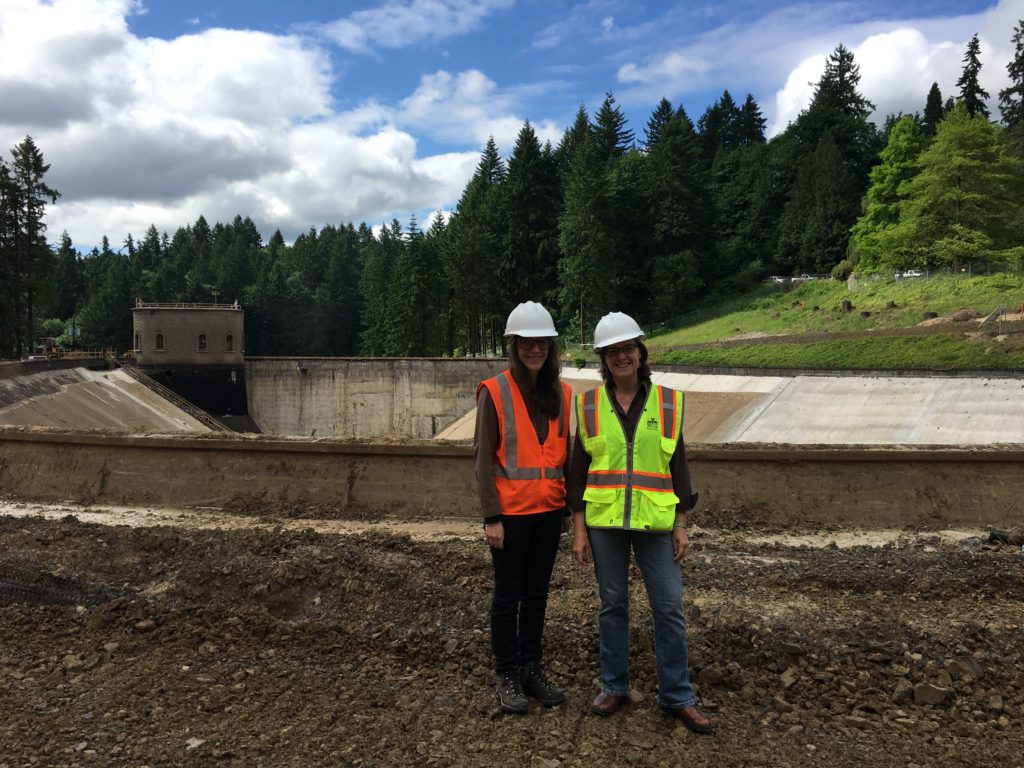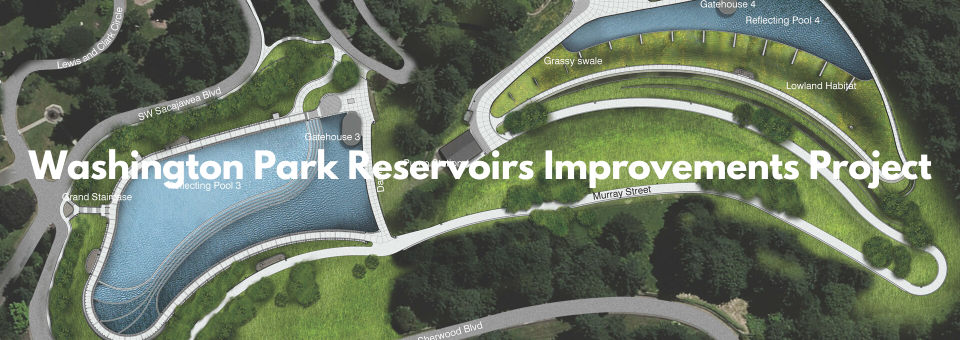Reservoir No. 3 and Reservoir No. 4, bodies of water enriching the landscape of Washington Park, one of Portland’s largest and oldest parks, were constructed between 1894 and 1911 as part of a gravity-fed mountain watershed system to provide the City of Portland with high quality drinking water.
Reservoir No. 3 and Reservoir No. 4 are listed on the National Register of Historic Places and are highly prized historic resources for the citizens of Portland and Portland’s national and international visitors. The Portland Water Bureau is currently rehabilitating through alterations of the existing reservoirs with new below grade storage facilities. The challenge is to design and integrate an engineering solution to a 100+ year historic resource, while simultaneously designing thoughtful changes to the context, park setting, and historic features. The alterations to the Reservoirs offer an opportunity to evaluate the evolution, long-term future, and protection of these cultural amenities.
All historic images of Washington Park Reservoirs are courtesy of the City of Portland Archives.
Arising from the Olmsted Brothers vision for Portland and the City Beautiful movement, the Reservoirs, originally sited outside Portland’s City Park, became integral features within the rapid evolution of City Park into Washington Park. Understanding the changes to the context, access, historic features, and landscape was critical to providing the basis of design. PMA developed comparative maps highlighting the development of transportation routes, growth of the west hill neighborhoods surrounding Washington Park, rapid acquisition of land to grow the boundary of Washington Park, and alternation of uses within the park surrounding the Reservoirs.
New photographs taken in the same location of original photographs assisted in evaluating changes scenic views, a key original City Beautiful concept. Photographic research and analysis was critical in understanding changes to the historic features caused by both natural events, like landslides, and man-made changes, like roof top additions and removal of historic components. The comparative studies resulting from the research were instrumental in PMA leading the liaison with the preservation community including private individuals, groups devoted to historic preservation, and the Portland Historic Landmarks Commission.
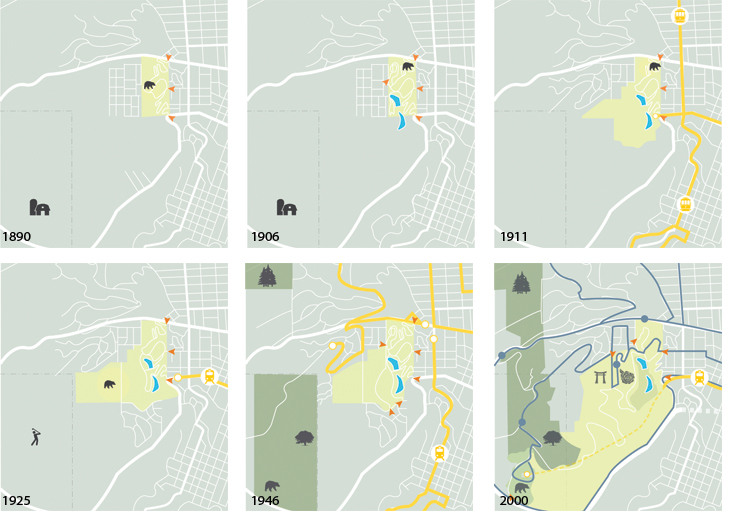
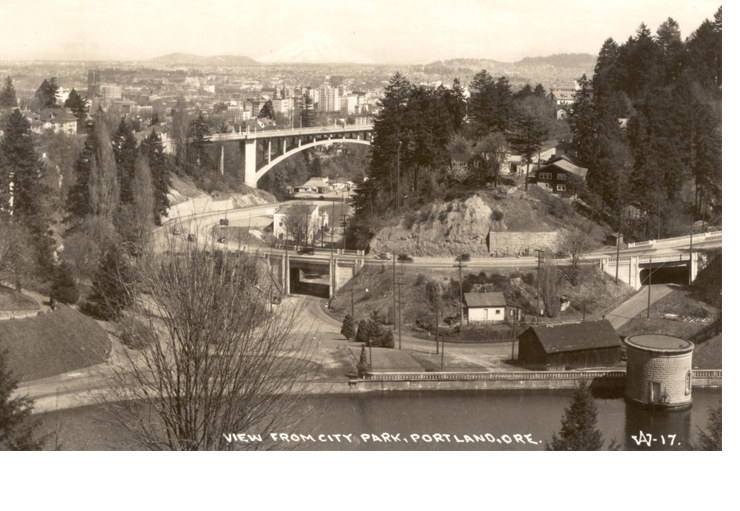
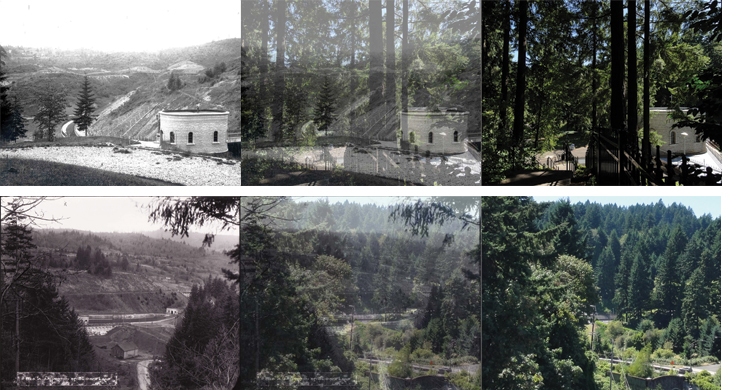
Reservoir No. 3, Reservoir No. 4, and the structures within the historic district are large, complex with organic shapes. Traditional flat elevations and plan view drawings would be inadequate as the basis of assessing the building conditions. The assessment of resources including the basin, walkways, railing, dam, gate house, equipment, Weir Building, Pump House, Generator House, and fountain was conducted using laser scanning techniques . PMA used scanned point clouds to verify accuracy of drawings to the actual built condition and to refine the 3D model made from historic plans. The point clouds were imported into a CAD program to overlay an existing 3D model enabling PMA to create highly accurate 3D models of architectural spaces. Deficiencies have been labeled and drawn to record the material deficiencies and prepare preservation plans.
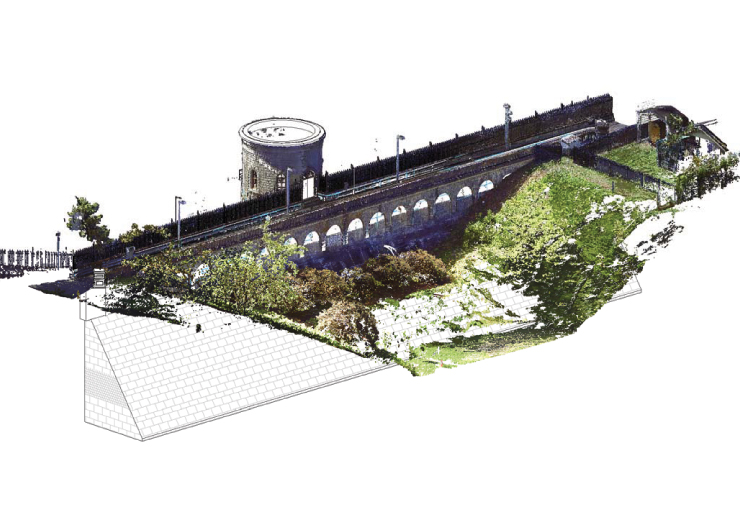

Based on the historic vision and use of the Reservoirs, PMA developed the thoughtful changes strategy to restore the key attributes of the Reservoirs including prominent water, scenic views, access, and restoration. The strategy compared the 1894 design intent with the 2013 existing conditions and developed design concepts to restore, retain, and reinterpret the key attributes while accommodating water storage structures intended to maintain the historic reservoirs for the next 100 years.
PMA developed simple graphic drawings depicting the historic/current/restored conditions. The thoughtful changes propose reinterpreting large expanses of water using sound and tactile senses in addition to the historic visual perception. Overgrown and mature landscapes will both be restored and altered to recreate scenic views of Mt. Hood across the reservoir water. The new design will restore historic paths and points of entry to encourage a return to the City Beautiful ideals of family strolls around the water features, and restore and preserve damaged historic concrete features.
